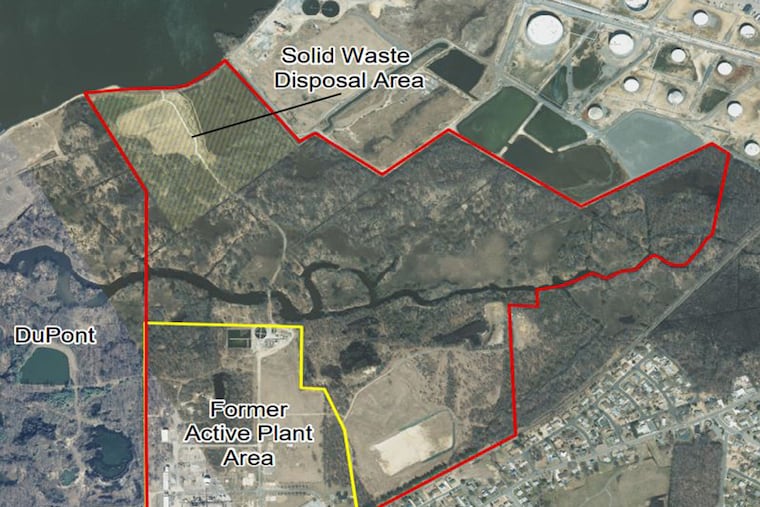EPA to dig up tons of toxic soil in South Jersey Superfund cleanup
Hercules Inc. operated its plant on a 350-acre site in the Gibbstown section of the township. Its plant spanned 80 acres with a four acre disposal area and ran from 1955 to 1974.

The U.S. Environmental Protection Agency is proposing to excavate thousands of tons of contaminated soil and treat millions of gallons of water to finish cleaning up a Superfund site where a business dumped chemical waste into unlined pits next to the Delaware River in South Jersey over decades.
Both the ground and water at the Hercules Inc. site in Greenwich Township were contaminated with lead, volatile organic compounds, and other toxic elements. Hercules made the chemical compounds cumene hydroperoxide and dicumyl peroxide between 1955 and 1974 on part of a 350-acre site in the Gibbstown section of the township. Ultimately, those chemicals were often used by other businesses to make solvents, plastics disinfectants, and other compounds.
Prior to that, DuPont dumped aniline and tar waste on the site's four-acre disposal area — which is why the disposal pits are often called tar pits. Aniline is often used to make construction and automotive foams.
The site was placed on the Superfund national priorities list in September 1983 and cleanup started in 1996. Plant operations stopped and buildings were demolished in 2010.
Hercules is one of 14 Superfund sites in the Philadelphia region identified by the Inquirer and Daily News as lying within a flood zone susceptible to rising seas connected with climate change. In the event of a flood, such sites have the potential to spread contaminants.
Today, the tar pits are capped and monitors are in place at Hercules. And more than two billion gallons of contaminated groundwater has been extracted and treated to protect municipal drinking-water wells.
Last week, the EPA proposed its final cleanup plan for Hercules. It will hold a meeting at 7 p.m. Aug. 16 at the township's municipal court building to explain it to the public.
The federal agency is proposing to excavate and treat the top four feet of contaminated soil. As part of the treatment, it will use "naturally occurring microorganisms to destroy or break down the contaminants." It wants to dig up and get rid of lead-contaminated soil, and address sediment at Clonmell Creek. Treated soil and sediment would be reused as cover at the site. Also, the EPA plans to continue extracting and treating contaminated groundwater.
In all, it will excavate about 22,500 cubic yards of soil, some of which is contaminated with cumene and benzene. It will treat 500 cubic yards on site. And, it will extract and treat an estimated 657 million gallons of contaminated water over 10 years.
"Under EPA's oversight, the site has been assessed and has resulted in the treatment of two billion gallons of contaminated groundwater," said Pete Lopez, administrator for EPA Region 2, which includes New Jersey. "This work is at the very core of EPA's mission, and we are dedicated to continuing our significant progress in addressing contamination at this site."
Greenwich Township officials could not be reached immediately for comment.
Jeff Tittel, director of the New Jersey Sierra Club, called the cleanup plan "a step in the right direction" that falls short of full remediation because the disposal pits are not being removed.
"If the tar pits are still there, the groundwater on the site will never be cleaned and will continue to pollute," Tittel said. "This cleanup plan is long overdue for the Hercules Superfund site. However, we need a full cleanup instead of a cheap and quick cap."